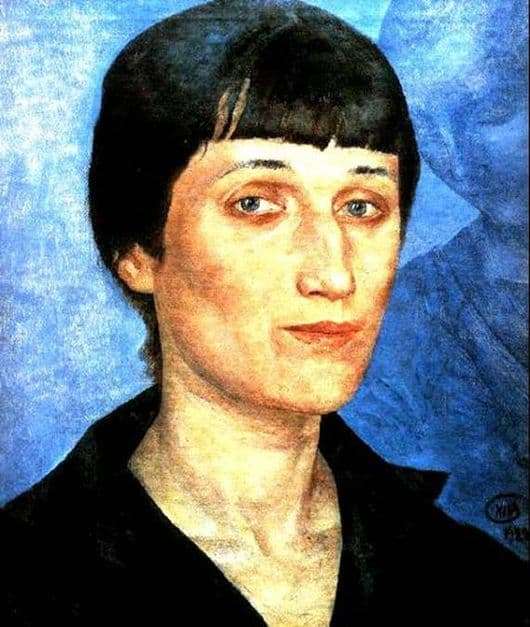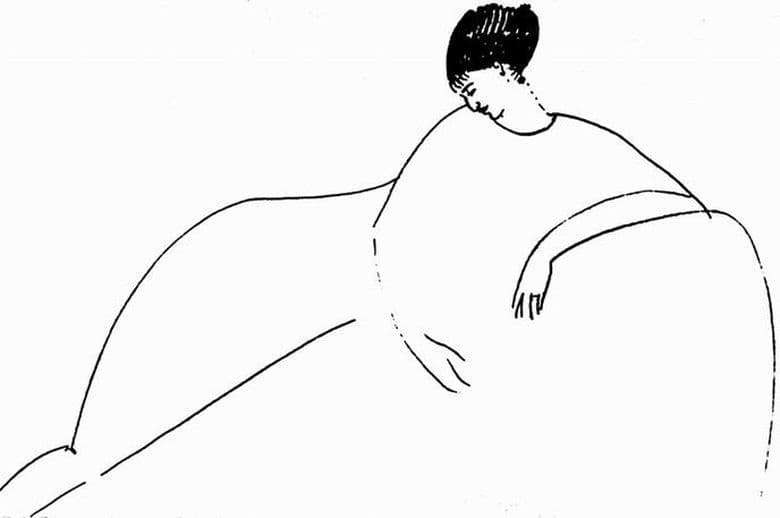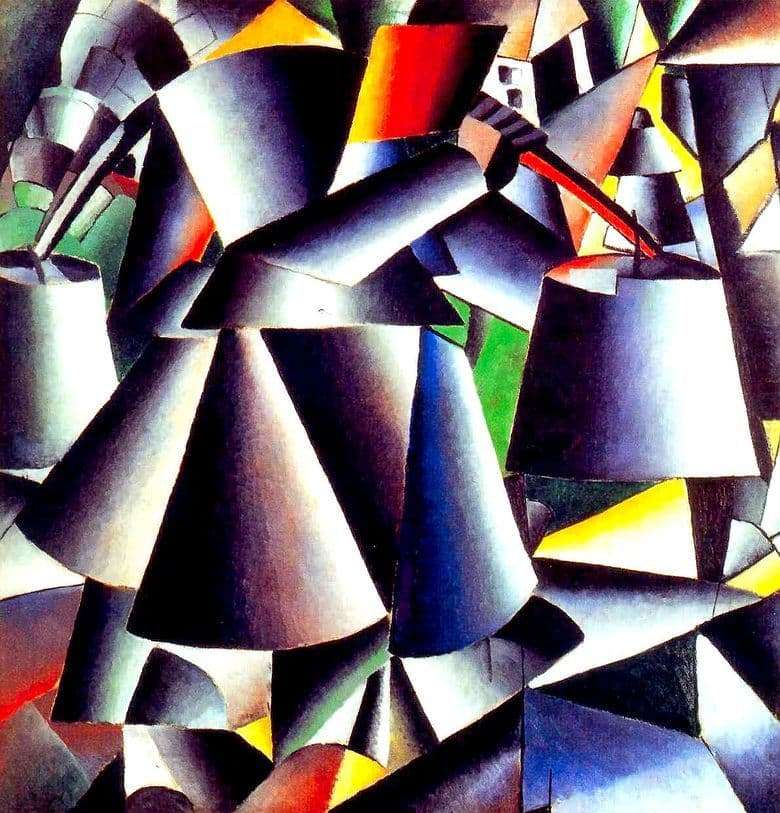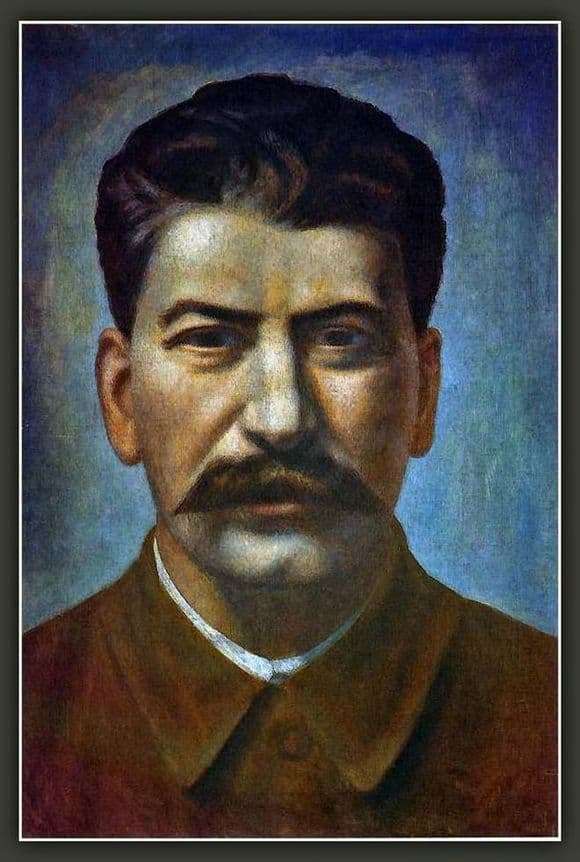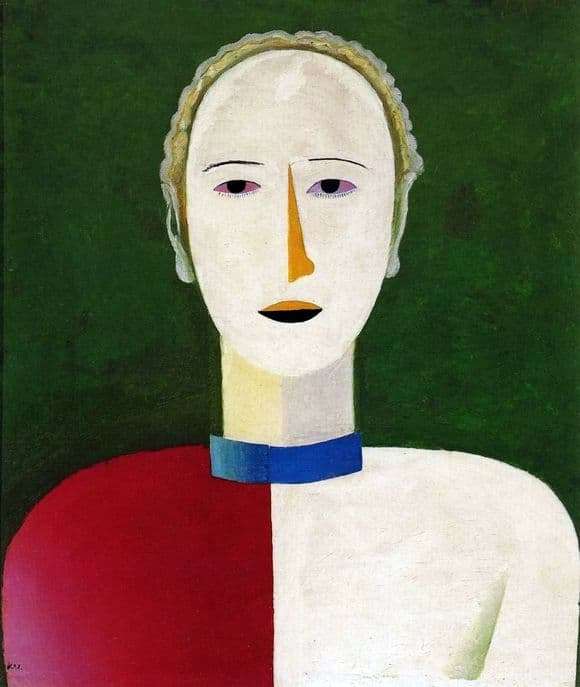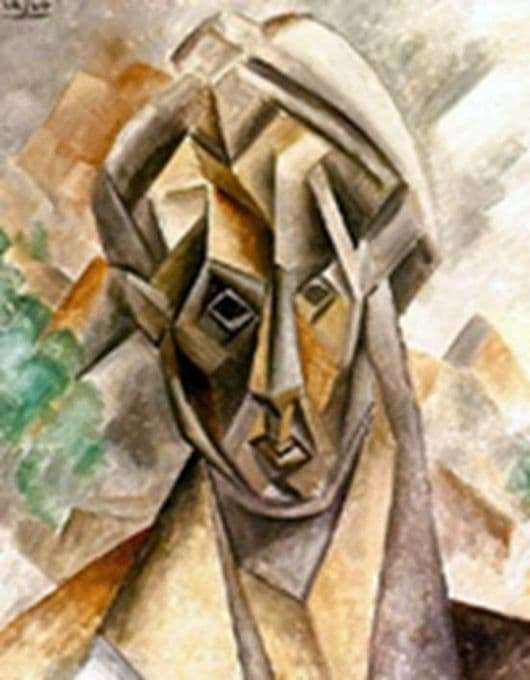
Altman – a Soviet avant-garde artist, one of those that didn’t recognize any canons, used a wild mix of genres, for the sake of the purpose – transmitting mood, sensations, events – neglecting everything else. “Anna Akhmatova” of his brush, despite the fact that she was recognized by all the most unpleasant of her portraits, meanwhile, she found unmistakable recognition from her relatives and friends.
The son of Akhmatova writes that although she likes the other portrait of the mother a lot more, where she looks more tender and lyrical, and there is no trace of cubism, the portrait of Altman better conveys what she was in those years. In the portrait there are a lot of sharp angles, disturbed perspective. Akhmatova is sitting in an armchair, having thrown her leg over her leg, a sharp knee sticks out, dark blue dress comes down to her shoes with hard folds, hands are folded on her stomach, and a yellow shawl falls from her elbows. Background – extremely generalized, some sharp edges, paradoxically reminiscent of flowers, gray floor, wooden stool under their feet.
Throughout the pose, in the manner of writing, a tough, uncompromising woman looms with a burning flame inside. All of it sticks out with sharp corners – not because it is commanded by cubism (other works of Altman are not so angular), but because this is its essence. Eternally repressed, always unpublished, having lost two husbands, Akhmatova is ready to shoot with sharp corners, repelling any attack, snapping at any enemy. However, if alertness, almost animosity, is felt in her posture, her face completely breaks this feeling. Akhmatova looks a little to the side, and on her lips she has a strangely tender smile for such an angular, stern face. As if a carefully guarded flame looked out from inside, as if the sun peeped through the clouds, as if something cherished,
Description of the painting by Nathan Altman “Anna Akhmatova”
